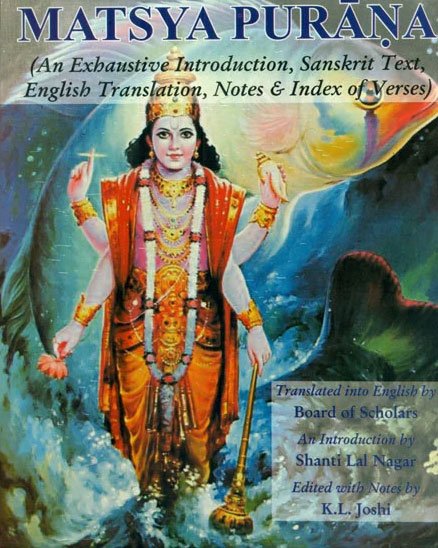The Matsya Purana (critical study)
by Kushal Kalita | 2018 | 74,766 words | ISBN-13: 9788171103058
This page relates ‘Haihaya Dynasty’ of the English study on the Matsya-purana: a Sanskrit text preserving ancient Indian traditions and legends written in over 14,000 metrical verses. In this study, the background and content of the Matsyapurana is outlined against the cultural history of ancient India in terms of religion, politics, geography and architectural aspects. It shows how the encyclopedic character causes the text to deal with almost all the aspects of human civilization.
Part 2.1f - The Haihaya Dynasty
The descendants of Haihaya are called as Haihayas. Haihayas were powerful and very ambitious. As mentioned earlier Haihaya was the eldest son of Śataji and grandson of Sahasraji who was the son of Yadu. Haihaya was succeeded by his son Dharmanetra. Kunti was the son of Dharmanetra. After Kunti his son Saṃhata succeeded in this dynasty. Saṃhata was followed by his son Mahiṣmān. Mahiṣman had a son Rudraśreṇa by name. Dūrdama was the son of Rudraśreṇa and after him his son Kanaka had succeeded. Kanaka had four sons, viz., Kṛtavīrya, Kṛtāgni, Kṛtavarmā, Kṛtojā.[1] Kṛtavīrya’s son Arjuna succeeded thereafter.
According to Matsyapurāṇa Arjuna was the lord of the seven continents of the world.[2] As a great monarch and conqueror he raised the Haihaya power to a new height. From mouth of Narmadā to the Himālayas he extended his invasion. He founded the city Mahiṣmati after conquering the Nāga king Karkotak. He begot hundred sons. Out of the hundred sons five were valiant and virtuous. They were Śurasena, Śura, Kroṣṭu, Jayadhvaja and Avanti.[3] Arjuna and his compatriots were slewed by Paraśurāma as a revenge for killing his father Jamadagni.[4] Jayadhvaja begot a son named Tālajaṅghā. Tālajaṅghā had hundred sons. Vītihotra, Śāryāta, Bhoja, Āvanti, Kuntikeya were five of them. Ānarta was the son of Vītihotra. He is one of the prominent kings of this dynasty. Ānarta was blessed with a son named Durjeya.[5] The Haihayas dynasty comprised in five groups Vītihotras, Śaryātas, Bhojas, Avantis and Tundikeras. They all together called as Haihaya-Tālajaṅghas.
Footnotes and references:
[1]:
Ibid., 43.9-12
[2]:
Ibid., 43.13
[3]:
Ibid., 43.46
[4]:
Ibid., 43.30-44
[5]:
Ibid., 43.49
